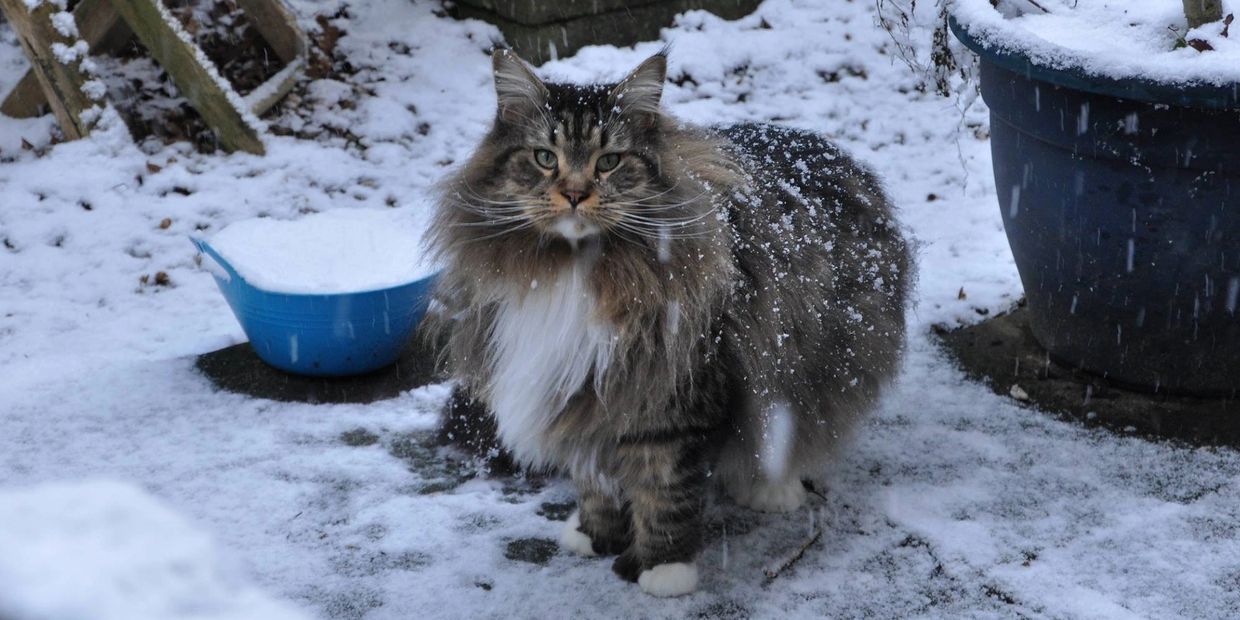History


The origin of the Maine Coon
In an interview conducted with Don Shaw in Memphis in early March 1976, Mike Hicks, Beth Hicks, and Rick Bramham talked with Mr. Shaw, TICA Allbreed Judge, geneticist and outspoken genetics editor of “Cats” Magazine. In this interview they also talked about the polydactyl Maine Coon. Beth Hicks stated: ‘I don’t know if you are familiar with it but there was a study done by someone connected with an university in the 1950’s which showed that 40% of the Maines were polydactyl. Now, this was before they came back on the show circuit.’ The interview was taped and then transcribed verbatim. (The Scratch Sheet, Summer 1976)
A little bit extra
Polydactyly has been noted in the general cat population as early as the late 1800’s. Polydactyl cats are found in Great Britain, Southeast Asia and other parts of the world, as well as all over the United States. New England and Florida, especially the Florida Keys, however, seem to have the densest population. No one is entirely sure whether polydactyl cats originated in the United States or came here from elsewhere. Some people believe polydactyls are an American phenomenon and made their way to other parts of the globe on sailing vessels. Others believe the reverse. “Are they separate mutation events or the result of human commerce?” Dr. Pflueger, MD, director of medical genetics at the Baystate Medical Center in Springfield, Massachusetts and back then chair of the genetics committee for The International Cat Association (TICA) discusses this in ‘A little bit extra’, interview with Dr. S. Pfleuger by Karen Commings. (Catwatch Feb’06)
Heritage and historical polys
Without question, though, the polydactyl Maine Coon is part of the Maine Coon heritage and has contributed to the gene pool of this breed from the very beginning. Today, we find polydactyls in almost every Maine Coon pedigree.

MCBFA Polydactyl Standard
In the initial struggles to get the Maine Coon cat accepted in Fancier Associations, a decision was made to exclude the trait, not for health concerns, but because the image of polydactyly was seen as a close reference to the domestic or barn cat. During its inception, the MCBFA actually included a polydactyl Standard, which remains valid to this day. It states: Our MCBFA Polydactyl Standard has been voted in by our membership, and the wording is as follows: “The Maine Coon Polydactyl Cat should conform to the Standard of the Maine Coon Cat, with the exception that multiple toes are allowed on either fore or hind paws or both.” (The Scratch Sheet spring 1970)
Intention to include polydactyls in the future
Further evidence exists in a letter dated September 29th, 1973 written by the Vice-President of the MCBFA at that time. Rodney Ljostad writes: “We have a six toed kitten in our house too. You are right that they are not accepted at cat shows yet. We knew that many Maine Coon cats were polydactyl and did not want this trait to get entirely lost from the breed. Then we heard that some of the breeders who had these cats were no longer able to breed them. So my wife and I decided we had better get one and keep this trait going in the breed.” A key word here is “yet”. This clearly shows the intention to include polydactyls in the future. (Letter dated September 29th, 1973 of the then Vice-President of the MCBFA Mr. Ljostad).
The Maine Coon: Cat Breed FAQ
Sadly, once the Maine Coon breed was established, that aim was not achieved, and over time, polydactyly was bred out to fit show standards. A cat FAQ on the MCBFA website comments on why the Maine Coon polydactyl was culled from the breed (due to it being a disqualification in competition).
Copyright © 2020 - 2024 MCPolydactyl - All Rights Reserved. Disclaimer